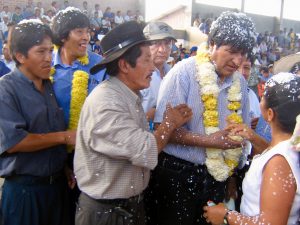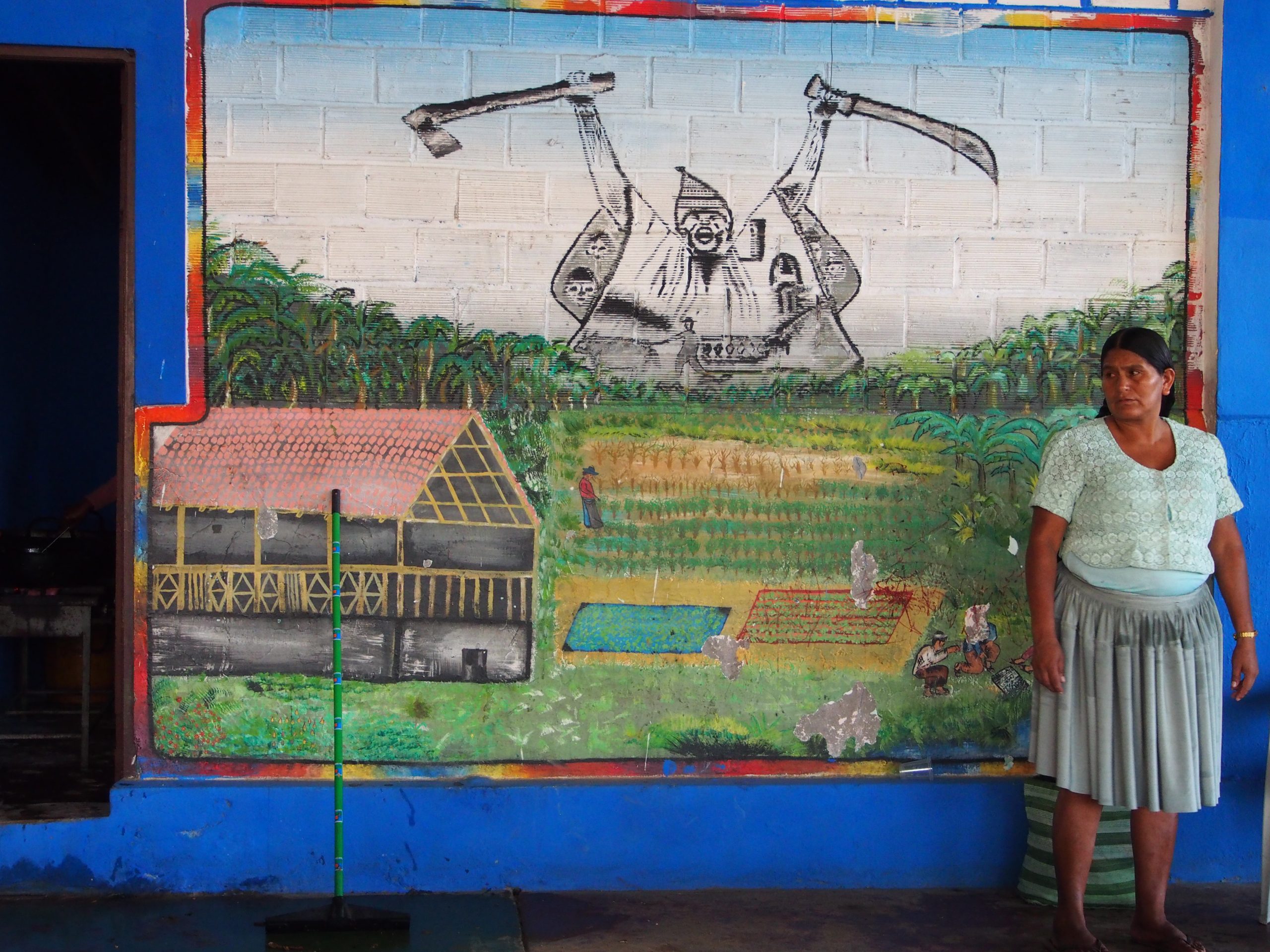By Thomas Grisaffi and Linda Farthing
Originally published in the Conversation
The US government’s annual report on the drug trade has accused Bolivia once again of failing to do enough to tackle the production and trafficking of illicit narcotics. This has been the US mantra for the ten years since Evo Morales, Bolivia’s first indigenous president, made a radical break with the US-funded “war on drugs”.
The US’s stance flies in the face of ample evidence that Bolivia has markedly reduced coca leaf cultivation. And in spite of cuts to US counter-narcotics assistance, Bolivian security forces are seizing illegal drugs at much higher levels than when the US Drug Enforcement Administration (DEA) was in charge.
Bolivia is the world’s third largest producer of cocaine, a drug manufactured from coca leaf – which is central to Andean culture. Bolivia’s programme permits poor farmers to cultivate a small (up to 1,600 square metre) plot of coca, and encourages farmers to self-police to respect these limits.
This approach is known as “social control”. It’s a world apart from the old US-led policy, which demanded that local security forces forcibly eradicate coca crops. That approach resulted in two decades of violence, and neither reduced coca production nor restricted the flow of drugs reaching the US.
By contrast, Bolivia has now become the world’s first source country to take a “harm reduction” approach. The social control programme is designed to emphasise community participation and respect for human rights.

Morales’ “Coca yes, cocaine no” policy makes a clear distinction between coca leaf, and cocaine the illegal drug. Indigenous Bolivians have consumed coca leaf for millennia; it can be chewed or drunk as a tea, and is used to stave off hunger and suppress fatigue. Local cocaine consumption, by contrast, is almost non-existent.
The country’s 75,000 coca growers are spread across two regions in the country’s valleys and lowlands, and they all belong to strong local peasant unions. These organisations are at the centre of the government initiative. They monitor compliance by organising regular commissions with neighbouring unions to inspect members’ plots. Growers often quickly eliminate excess coca as soon as they hear the union is checking.
Observance of the agreement also falls to a government agency run by the farmers themselves. If too much coca is found, all the family’s coca is destroyed by a combined military-police unit. But unlike the past, eradication is negotiated, and is no longer associated with the violation of human rights. Re-planting is banned for a year, leaving farmers without any coca-related income for the two years it takes until new bushes mature.
A sophisticated UN-financed satellite system provides surveillance and monitoring data for the programme, and all growers must be registered with the government. Almost 1.2m acres of land has been titled, meaning many growers have formal property rights for the first time. Taken together, these measures mean their lives are substantially less precarious.
Since 2006, almost all coca has been eradicated through this negotiated, co-operative system, and the total acreage of the plant is now at its lowest level since 2003. Many growers participate out of deep-seated loyalty to Morales, who still heads the federation of growers’ unions, but they also still consider the leaf itself sacred, and it’s a vital part of their subsistence income.
The farmers know that if coca is restricted, demand will keep the price up. Whether as members of their unions, agricultural extension agents or inspectors, growers largely implement the programme, enhancing their sense of ownership.
Onward and upward
The newfound stability has turned coca-growing regions into places bustling with small businesses. The Morales government has ramped up development assistance, improving educational, health, and road infrastructure, as well as developing alternative uses for coca, using it to manufacture everything from flour to toothpaste.
Social control’s relative success does not mean it comes easy. There are debates over enforcement at every local union meeting, and some farmers complain that the upper limit on coca production is too low to meet their basic needs. Forced eradication continues in national parks and regions that aren’t part of the agreement.
Social control of coca alone cannot stop drug trafficking. Technological advances have made it ever easier to produce coca paste, the first step in cocaine manufacture, and have dispersed the product throughout Bolivia. Nonetheless, it’s become harder to find places to manufacture paste in coca-producing regions because farmers fear losing the right to grow coca if they are discovered.
It is unclear whether the programme will continue after Morales leaves office in 2019. It is uncertain, too, if it can be replicated elsewhere because it depends so heavily on strong local organisations that don’t exist in other places. But its novel approach is invigorating the drug policy debate, and is at the vanguard of the new, bottom-up approaches that are helping solve one of the world’s most complex and intractable problems.
Linda Farthing also contributed to this article. She is a researcher and writer specialising in Bolivia, and the founder of the Andean Information Network.

